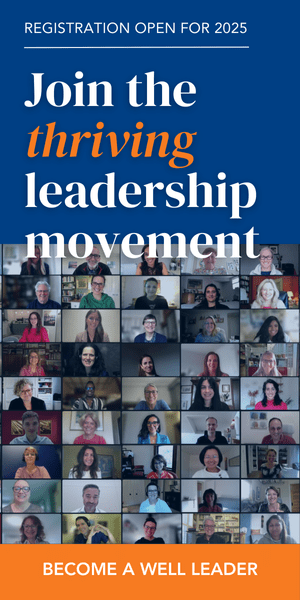Last week I met with a senior executive team to target strategies for boosting their effectiveness. The crumbs of two dozen doughnuts and their scattered sprinkles were center-stage on the conference table. Remember the elementary school nutritionist’s warning that every sugar rush is followed by the inevitable energy crash? It occurred to me that despite knowing better, many leaders still fall into the routine of consuming traditional office staples (like doughnuts and coffee) that ironically sap the mental and physical performance they had hoped to build.
Unhealthy eating is not an isolated issue. At the World Economic Forum this year, nutrition rated among the many hot topics discussed by world leaders. Here in the U.S., Michelle Obama embarked on a personal campaign to battle the epidemic of child obesity. While some organizations ‘get it,’ I’m afraid that far too many business execs fall into the same old energy-depleting eating habits. In fact, few execs I know truly make a connection between the fuel they consume and the oomph they need to get their work done.
So, here’s a quickie refresher: How can we leaders strategically use food to sustain high energy, stamina, and optimal performance? I asked this question to my colleague, Jerianne Heimendinger. She’s a thought leader in her field, counseling executives regarding nutrition and behavior change. Jerianne offered five invaluable tips which I’ve paraphrased here:
- Reach for a glass of water (at least eight every day). OK, we’ve all heard this tactic before, but Jerianne puts a little chemistry behind it. She says that to generate a constant energy supply, the body requires oxygen, fuel, and water. Water helps us efficiently absorb the nutrients we need; yet most people are unknowingly dehydrated. If we count on thirst to signal our need for fluid, we’ve waited too long to take a drink. A proactive, energy-building strategy is to down two glasses of water a half hour before each meal, and a few extra glasses throughout the day. And, when you need a pick-me-up, reach for water first. Often, that sluggishness you’re feeling isn’t served as well with caffeine or sugar; it’s your body saying, “I need water.” Drink up.
- Invest in high quality food. When you cut corners on your food because of cost or convenience, don’t underestimate how much this affects your capacity to lead. Above-average performance requires top-notch fuels. Choose foods which are as close to whole as feasible: whole grains, whole fruits, etc. Even better, eat foods which are organic and in season whenever possible.
- Multitask, sure — but not while you’re eating. Leaders are always busy running from one thing to another and eating is often just another item on our to-do list. When we multitask, however, our bodies aren’t as capable of producing the digestive enzymes we need to fully absorb food’s nutrients. Multitasking puts our physiology in on-demand mode: Our bodies become prepared to either fight or take flight from an encroaching tiger (or cranky customer) when what we really need to do is “rest and digest.” The tip? Focus. If you want food to be an effective source of stamina, rather than indigestion, it pays to take time out to eat mindfully.
- Add gratitude to your menu. Being grateful puts your body into a coherent, restful state, enabling you to digest and utilize food more efficiently. So say your blessings, take a moment to appreciate the presentation of your meal, practice deep breathing … do whatever it takes to get into a space of gratitude while you eat.
- Encourage healthful eating in your organization. Show your employees how much you care about them through energizing food. Put the candy bowl out of sight and replace it with healthy snacks. Promote teaming up so that employees help each other eat high quality foods at lunch. Use incentives to support healthy eating in the workplace. As leader, you’re the role model; demonstrate your commitment to high energy and performance through both your personal eating habits and your sponsorship in the organization.
Like so many of the challenges we face as leaders, taking the time to reflect on what we already knew about healthy eating is a great start. I don’t want to sound like a tyrant to doughnuts and coffee, but when leaders really want to eat to win, we’re better off reaching for a handful of healthy nuts and water. Bottoms up!
Photo by lu_lu







All great points. But I would like to add another
6. Exercise – Studies have found that exercise reduces stress, blood pressure and not so well documented increase creative thinking. Workaholics are driven by the high they feel of the excitement and endurance to go long and strong. This can also be their demise. Being a high achiever and successful does not mean working 20 hours days.
30 minutes of cardio 5 times per week, mind body training such as yoga or pilates will go a long way to enhancing the benefits of 1 through 5.
Jerome
Making a life change by exercising was the key to managing change.